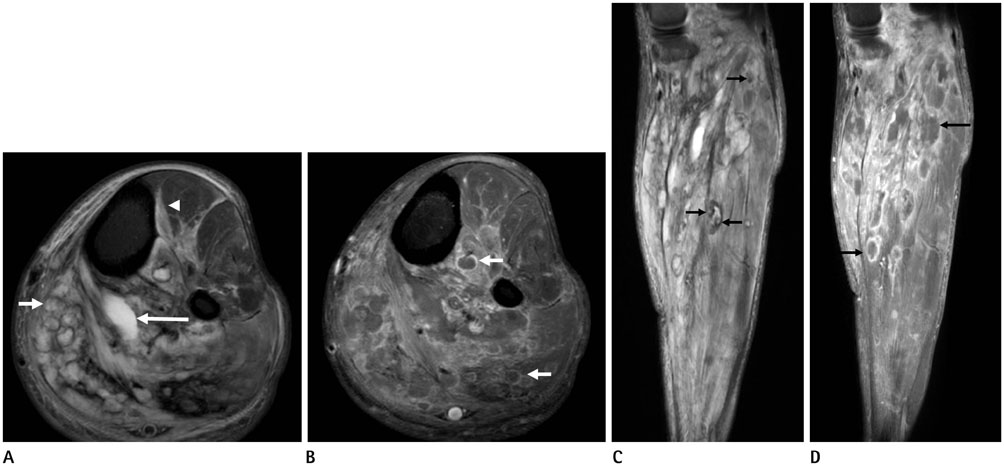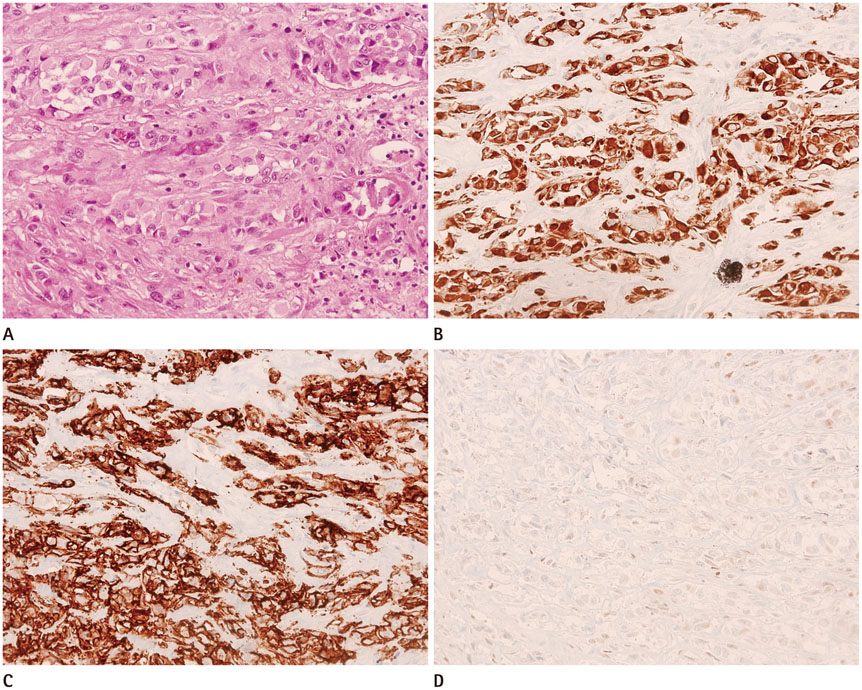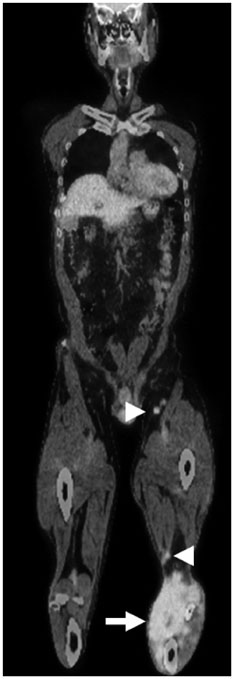J Korean Soc Radiol.
2015 Jun;72(6):405-410. 10.3348/jksr.2015.72.6.405.
Classic-Type Epithelioid Sarcoma Mimicking Multiple Droplet-Like Abscesses in the Lower Leg
- Affiliations
-
- 1Department of Radiology, Research Institute of Radiological Science, Medical Convergence Research Institute, and Severance Biomedical Science Institute, Yonsei University College of Medicine, Seoul, Korea. jss@yuhs.ac
- 2Department of Pathology, Yonsei University College of Medicine, Seoul, Korea.
- KMID: 2098020
- DOI: http://doi.org/10.3348/jksr.2015.72.6.405
Abstract
- Epithelioid sarcoma is an uncommon, slow-growing soft tissue tumor that usually arises in the distal part of an upper extremity, predominantly occurring in young adults. Classic-type epithelioid sarcomas appear to be less aggressive and have a better prognosis. In magnetic resonance imagng, epithelioid sarcoma usually appears as a subcutaneous mass or ulcer with cutaneous erosion. Here, we report a classic-type epithelioid sarcoma in a 68-year-old male without an apparent mass, presenting with only numerous small disseminated droplet-like ring-enhancing nodules mimicking abscesses, and multiple metastases.
MeSH Terms
Figure
Reference
-
1. Hurtado RM, McCarthy E, Frassica F, Holt PA. Intraarticular epithelioid sarcoma. Skeletal Radiol. 1998; 27:453–456.2. Romero JA, Kim EE, Moral IS. MR characteristics of epithelioid sarcoma. J Comput Assist Tomogr. 1994; 18:929–931.3. Yamato M, Nishimura G, Yamaguchi T, Tamai K, Saotome K. Epithelioid sarcoma with unusual radiological findings. Skeletal Radiol. 1997; 26:606–610.4. von Hochstetter AR, Cserhati MD. Epithelioid sarcoma presenting as chronic synovitis and mistaken for osteosarcoma. Skeletal Radiol. 1995; 24:636–638.5. Dion E, Forest M, Brasseur JL, Amoura Z, Grenier P. Epithelioid sarcoma mimicking abscess: review of the MRI appearances. Skeletal Radiol. 2001; 30:173–177.6. Nakashima H, Katagiri H, Sugiura H, Yonekawa M, Nishida Y, Yamada Y. Epithelioid sarcoma mimicking a primary osseous multifocal scapula lesion. Skeletal Radiol. 2002; 31:430–433.7. Fletcher CDM. World Health Organization. International Agency for Research on Cancer. WHO classification of tumours of soft tissue and bone. 4th ed. Lyon: IARC Press;2013. p. 216–218.8. Rekhi B, Gorad BD, Chinoy RF. Clinicopathological features with outcomes of a series of conventional and proximal-type epithelioid sarcomas, diagnosed over a period of 10 years at a tertiary cancer hospital in India. Virchows Arch. 2008; 453:141–153.9. Tateishi U, Hasegawa T, Kusumoto M, Yokoyama R, Moriyama N. Radiologic manifestations of proximal-type epithelioid sarcoma of the soft tissues. AJR Am J Roentgenol. 2002; 179:973–977.10. Chao KC, Chen C, Hsieh SC, Fang CL, Lao WT, Chan WP. MRI of epithelioid sarcoma of the thigh. Clin Imaging. 2005; 29:60–63.





